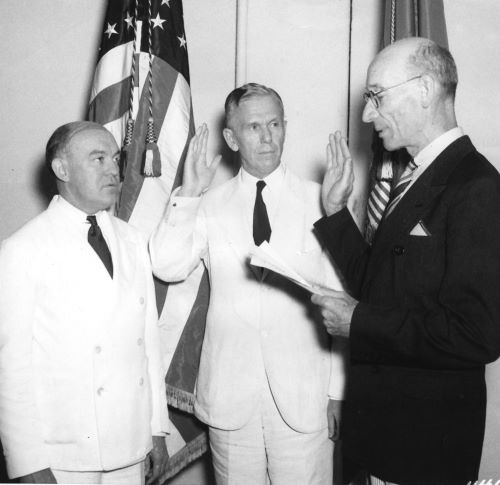
On September 1, 1939, Maj. Gen. George Catlett Marshall took the oath of office to become the 15th Chief of Staff of the U.S. Army, and was appointed a four-star general for the duration of his four-year term.
So what’s different about this photo?
To compare, here are two recent Chiefs of Staff at their swearing-in ceremonies:
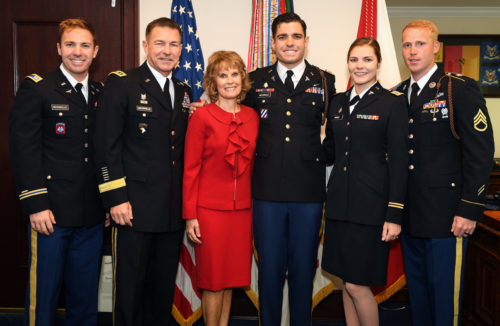
U.S. Army Chief of Staff Gen. James C. McConville at his swearing-in August 2019. (U.S. Army photo)
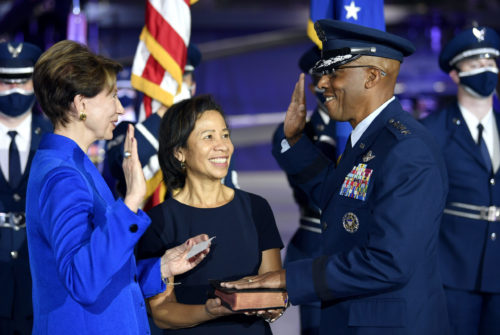
U.S. Air Force Chief of Staff Gen. Charles Q. Brown, Jr. at his swearing-in August 2020. (U.S. Air Force photo)
What do you notice? The uniforms? Yes, we are used to military members making their oaths in uniform. Gen. Marshall, on the other hand, was wearing a nice white civilian suit.
Why?
From volume 2 of American Military History, in a chapter discussing the interwar years, we find an explanation:
In keeping with a traditional distrust of foreign alliances and large military establishments, the American people also proved unwilling to support an Army in being any larger than required to defend the continental United States and its overseas territories and possessions, to sustain knowledge of the military arts, and to train inexpensive and voluntary reserve components.
It had become tradition for military officers serving in Washington, D.C. to wear “mufti” or “civvies” as the military called civilian clothing, rather than uniforms, in keeping with the public’s desire not to have the Army seem larger than it was (as many more soldiers per capita worked in D.C. than elsewhere in the United States). For a period of time during the tenure of Chief of Staff Gen. Charles Summerall, 1926-1930, officers had to wear uniforms one day a month. It wasn’t accepted well and the policy ended shortly after it began.
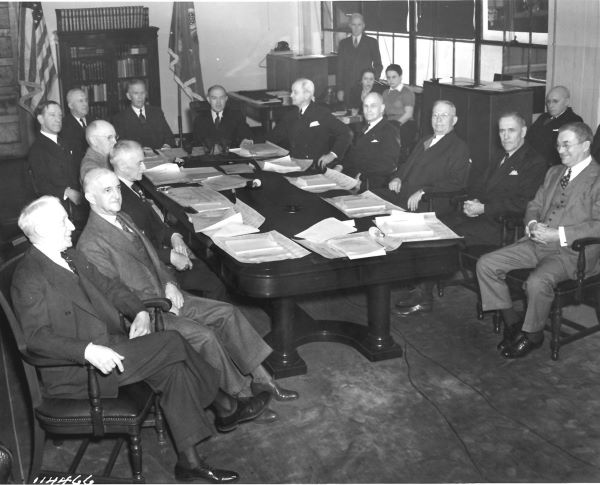
Conference of Corps Area commanders, November 1939.
A New Yorker profile on the Chief of Staff from October 1940 explained that “his suits, he sometimes tells Congressional callers, are several seasons old, although they look as good as new. These clothes help to overcome the prejudice many inland Americans feel against military men, a feeling induced by brass buttons and fanned into a leaping resentment by the sight of a Sam Browne belt.”
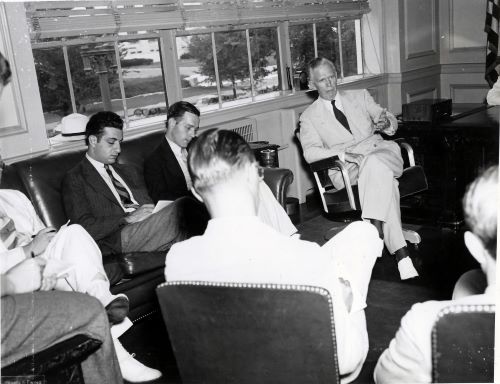
Chief of Staff office meeting, August 1940.
Gen. Marshall understood the necessity of suits rather than his customary uniforms. He talked about this in the taped interviews he did with Dr. Forrest Pogue in 1957, when he was discussing his Chief of Staff office set-up in the old Munitions buildings on Constitution Avenue:
I very purposely didn’t have a uniformed aide in it because I had to deal with such a large number of civilians or National Guard Reserves—a problem which the Navy did not have anything approaching—and with a great many Congressmen coming in. I thought it was wise not to have a very stern looking military set-up and I could quite handle the issues without it, which incidentally I think I have said once before—that the reason I continued the headquarters in civilian clothes for such a long time up until actually Pearl Harbor was because I didn’t want to antagonize the general public and the Congress with the easily aroused feelings toward the military that had always existed.
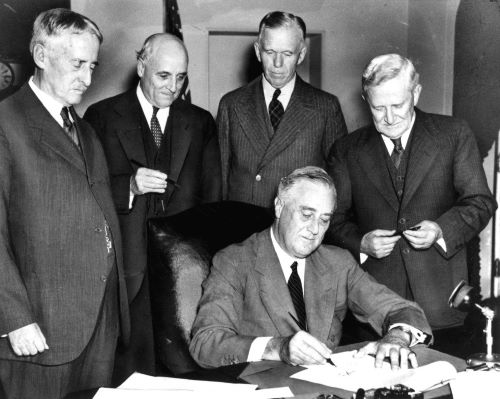
President Roosevelt signs Draft Bill, September 1940.

Gen. Marshall, left, testifying before a Congressional committee on the necessity of extending the draft, July 1941.
When the Army officers serving in Washington, D.C., had to begin wearing uniforms after Pearl Harbor, most had been in storage, and the halls of the Munitions buildings were said to have reeked of mothballs. My father, who was an MP in the National Guard in D.C. then said that the week after Pearl Harbor, the tailors were the busiest people in town; many of the long-stored uniforms did not fit, or needed updated rank sewn on.
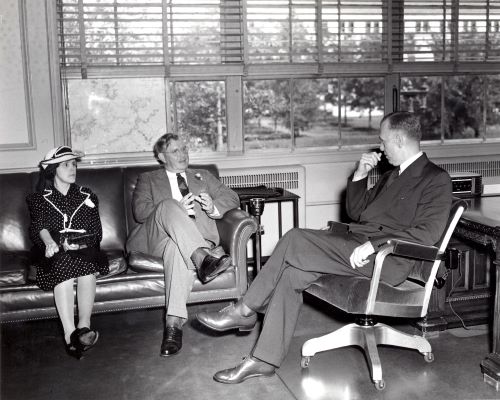
Visiting with Mr. and Mrs. Alvin York in the Chief of Staff office, July 1941.
As to why Gen. Marshall chose a white suit for his swearing-in — it was before Labor Day, and it was 84 muggy degrees in Washington, D.C., that day.
Watch Gen. Marshall take his oath as U.S. Army Chief of Staff, and then takes the oath to make him a 4-start general directly following.
Notes:
Photos from this blog from the George C. Marshall Foundation unless otherwise noted.
Information for this blog came from George C. Marshall Foundation resources; American Military History volume 2, Office of the Chief of Military History, 1969; The New Yorker Magazine Oct. 26, 1940; and National Oceanic and Atmospheric Administration.
Melissa has been at GCMF since last fall, and previously was an academic librarian specializing in history. She and her husband, John, have three grown children, and live in Rockbridge County with three large rescue dogs. Keep up with her @life_melissas.
